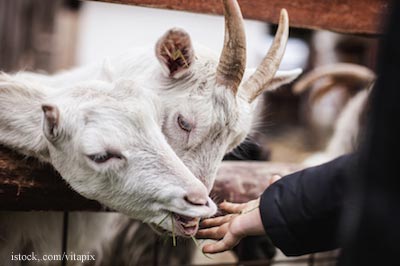E. coli HUS outbreak investigators in Minnesota are delving into the operational history at Dehn’s Pumpkins to determine what prevention plans were in place to combat the well-known risk of child E. coli infections from dangerous bacteria in petting zoo settings. One of the active observers of the Dehn’s outbreak is HUS attorney Fred Pritzker, whose Minneapolis-based law firm is preparing to represent victims in the area around Dayton, Minnesota.
 Two epidemiologists from the state health department, Carrie Klumb and Joni Scheftel, said three children have been confirmed to have matching infections of E. coli O157:H7 and one of those case patients remains hospitalized with kidney failure and HUS, or hemolytic uremic syndrome. Two additional illnesses are being evaluated as possible E. coli infections and the health department is urging anyone else who recently visited Dehn’s Pumpkins to come forward if they are suffering intestinal illness.
Two epidemiologists from the state health department, Carrie Klumb and Joni Scheftel, said three children have been confirmed to have matching infections of E. coli O157:H7 and one of those case patients remains hospitalized with kidney failure and HUS, or hemolytic uremic syndrome. Two additional illnesses are being evaluated as possible E. coli infections and the health department is urging anyone else who recently visited Dehn’s Pumpkins to come forward if they are suffering intestinal illness.
Klumb and Scheftel said the farm owners have been cooperating fully with the investigation and public access to the cattle and goat areas at Dehn’s is being prohibited. The rest of the farm, including the pumpkin patch, remains open for business.
Based on years of experience handling child HUS cases related to petting zoos, animal exhibits and livestock competitions, attorney Pritzker said that in virtually every outbreak, the germs are spread because individual owners and companies fail to comply with established safety rules. According to unpublished data from the Centers for Disease Control and Prevention, more than 100 human infectious disease outbreaks occurred in the United States from 1996 to 2008 involving animals in public settings. To address the problem, numerous guidelines have been announced by state public health agencies, many patterned after a compendium written in 2005 and revised in 2009 by the National Association of State Public Health Veterinarians
“The guidelines have been out there for years, but you’d be surprised how many operators disregard them,” said Pritzker, whose firm has collected tens of millions of dollars for HUS E. coli outbreak patients. “Minnesota families deserve to know what precautions Dehn’s took to protect their children from getting dangerously sick.”
The “Compendium of Measures to Prevent Disease Associated with Animals in Public Setting” created by the public health veterinarians has been endorsed by a number of organizations including the CDC. The precautions recognize that even healthy animals can harbor human enteric pathogens, many of which have a low infectious dose. Children are particularly attracted to animal venues but have increased risk for serious infections. In the case of E. coli O157:H7, children age 5 and under are at the highest risk for developing HUS. Hence the importance for operators to build in protections to minimize children from getting exposed in the first place.
Food Poisoning Bulletin has compiled a sampling of the measures, listed below:
- Venues should be divided into three types of areas: nonanimal areas (areas in which animals are not permitted, with the exception of service animals), transition areas (located at entrances and exits to animal areas), and animal areas (where animal contact is possible or encouraged.
- Prepare, serve, and consume food and beverages only in nonanimal areas.
- Provide hand-washing facilities throughout the venue and display hand-washing signs, especially where food or beverages are served
- Establishing transition areas through which visitors pass when entering and exiting animal areas is critical. A one-way flow of visitors is preferred.
- Post signs or otherwise notify visitors that they are entering an animal area and that risks are associated with animal contact.
- Instruct visitors not to eat, drink, smoke, place their hands in their mouth, or use bottles or pacifiers while in the animal area.
- Do not allow strollers and related items (e.g., wagons and diaper bags) in areas where direct animal contact is encouraged. Establish storage or holding areas for these items.
- Control visitor traffic to prevent overcrowding.
- Exit transition areas should be designed to facilitate hand washing.
- Post signs or otherwise instruct visitors to wash their hands when leaving the animal area.
- Provide accessible hand-washing stations for all visitors, including children and persons with disabilities.
- Position venue staff members near exits to encourage compliance with hand washing.
- Do not allow toys, pacifiers, spill-proof cups, baby bottles, or strollers in animal areas.
- Children should not be allowed to sit or play on the ground in animal areas.
- Ensure that animal feed and water are not accessible to the public.
- Promptly remove manure and soiled animal bedding from animal areas.
- Where feasible, disinfect animal areas (e.g., flooring and railings) at least once daily.




